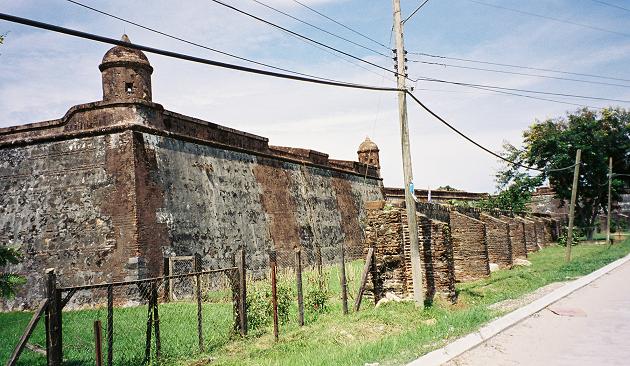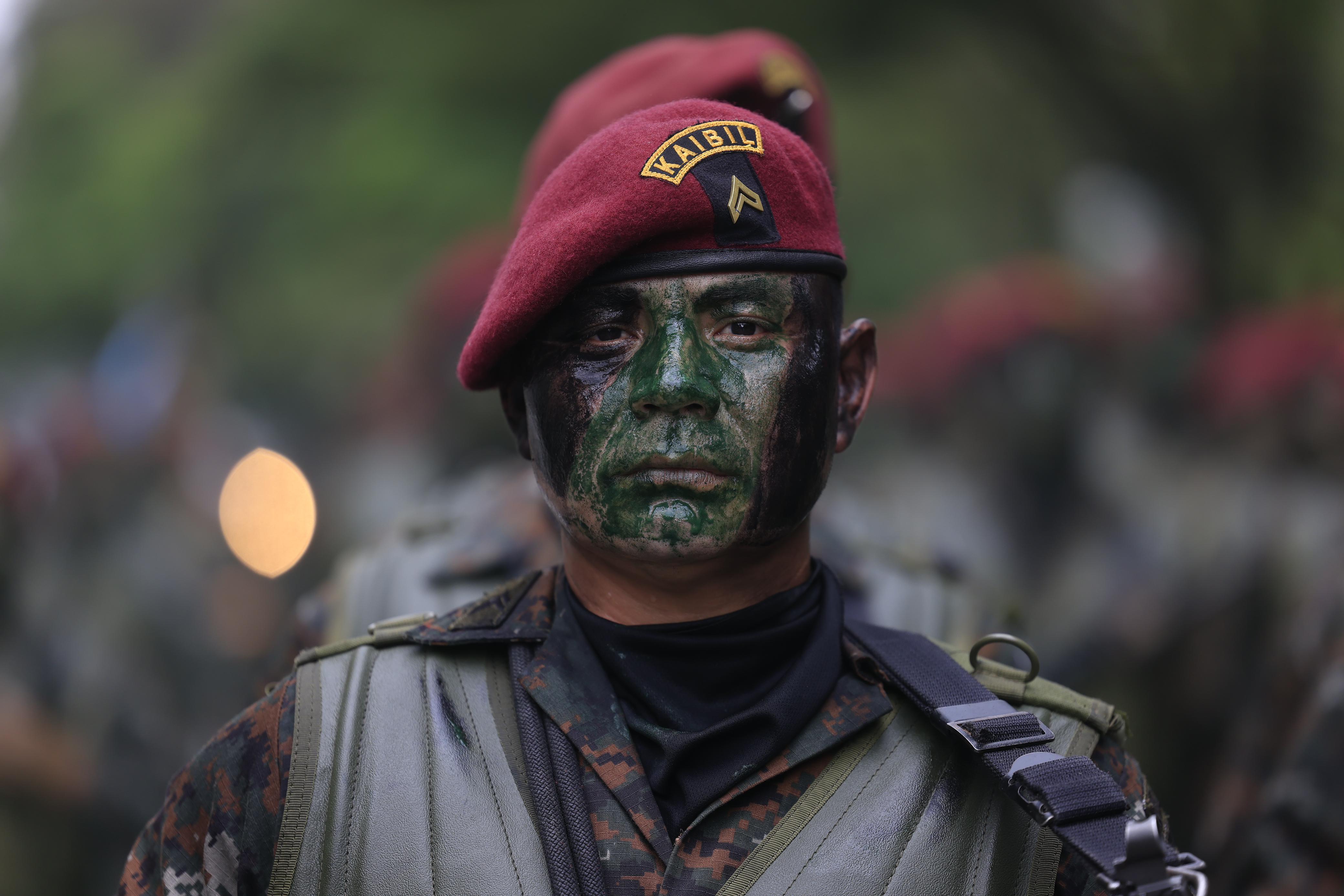|
Kaybʼil Bʼalam
Kaybʼil Bʼalam (alternatively written Kaibil Balam) was a 16th-century leader of the Mam people in the Maya kingdom in the western highlands of Guatemala. During the time of the Spanish invasion, the Mam population was mainly situated in Xinabahul (now modern-day Huehuetenango). However, due to the Spanish conquest, the people returned to the stone fortifications of Zaculeu for protection. The city was attacked in 1525 by ''conquistador'' Gonzalo de Alvarado y Contreras, brother of Pedro de Alvarado. Kaybʼil Bʼalam and his warriors successfully repelled the attempted siege by the Spanish forces for several months until being forced to surrender after being reduced to the verge of starvation.Recinos 1986, p.110. In 1975, the Guatemalan Army created a special operations force, the Kaibiles, named after Kaybʼil Bʼalam. The group is centered out of Huehuetenango Huehuetenango () is a city and municipality in the highlands of western Guatemala. It is also the capital of t ... [...More Info...] [...Related Items...] OR: [Wikipedia] [Google] [Baidu] |
Mam People
The Mam are an Indigenous Maya people in the western highlands of Guatemala and in south-western Mexico who speak the Mam language. Most Mam (617,171) live in Guatemala, in the departments of Huehuetenango, San Marcos, and Quetzaltenango. The Mam people in Mexico (23,632) live principally in the Soconusco region of . In times the Mam were part of the |
Special Operations
Special operations or special ops are military activities conducted, according to NATO, by "specially designated, organized, selected, trained, and equipped forces using unconventional techniques and modes of employment." Special operations may include reconnaissance, unconventional warfare, and counterterrorism, and are typically conducted by small groups of highly trained personnel, emphasizing sufficiency, stealth, speed, and tactical coordination, commonly known as ''special forces'' (SF) or ''special operations forces'' (SOF). History Australia In World War II, following advice from the British, Australia began raising special forces. The first units to be formed were independent companies, which began training at Wilson's Promontory in Victoria in early 1941 under the tutelage of British instructors. With an establishment of 17 officers and 256 men, the independent companies were trained as "stay behind" forces, a role that they were later employed in against the Japa ... [...More Info...] [...Related Items...] OR: [Wikipedia] [Google] [Baidu] |
16th Century In The Maya Civilization
16 (sixteen) is the natural number following 15 and preceding 17. It is the fourth power of two. In English speech, the numbers 16 and 60 are sometimes confused, as they sound similar. Mathematics 16 is the ninth composite number, and a square number: 42 = 4 × 4 (the first non-unitary fourth-power prime of the form ''p''4). It is the smallest number with exactly five divisors, its proper divisors being , , and . Sixteen is the only integer that equals ''m''''n'' and ''n''''m'', for some unequal integers ''m'' and ''n'' (m=4, n=2, or vice versa). It has this property because 2^=2\times 2. It is also equal to 32 (see tetration). The aliquot sum of 16 is 15, within an aliquot sequence of four composite members (16, 15, 9, 4, 3, 1, 0) that belong to the prime 3-aliquot tree. *Sixteen is the largest known integer , for which 2^n+1 is prime. *It is the first Erdős–Woods number. *There are 16 partially ordered sets with four unlabeled elements. 16 is the only num ... [...More Info...] [...Related Items...] OR: [Wikipedia] [Google] [Baidu] |
Colonial Guatemala
The Captaincy General of Guatemala (), also known as the Kingdom of Guatemala (), was an administrative division of the Spanish Empire, under the viceroyalty of New Spain in Central America, including present-day Costa Rica, Nicaragua, Honduras, El Salvador, Guatemala, and the Mexican state of Chiapas. The governor- captain general was also president of the Royal Audiencia of Guatemala, the superior court. Antecedents Colonization of the area that became the Captaincy General began in 1524. In the north, the brothers Gonzalo and Pedro de Alvarado, Hernán Cortés and others headed various expeditions into Guatemala and Honduras. In the south Francisco Hernández de Córdoba, acting under the auspices of Pedro Arias Dávila in Panama, moved into what is today Nicaragua. Moving of the capital The capital of Guatemala has moved many times over the centuries. On 27 July 1524, Pedro de Alvarado declared the Kaqchikel city Iximche the first regional capital, styled '' Sa ... [...More Info...] [...Related Items...] OR: [Wikipedia] [Google] [Baidu] |
Maya Monarchs
Maya monarchs, also known as Maya kings and queens, were the centers of power for the Maya civilization. Each Mayan cities, Maya city-state was controlled by a dynasty of kings. The position of king was usually inherited by the oldest son. Symbols of power Maya kings felt the need to legitimize their claim to power. One of the ways to do this was to build a temple or Mesoamerican pyramid, pyramid. Tikal Temple I is a good example. This temple was built during the reign of Yikʼin Chan Kʼawiil. Another king named Kʼinich Janaabʼ Pakal would later carry out this same show of power when building the Temple of Inscriptions at Palenque. The Temple of Inscriptions still towers today amid the ruins of Palenque, as the supreme symbol of influence and power in Palenqusix. Succession Maya kings cultivated godlike personas. When a ruler died and left no heir to the throne, the result was usually war and bloodshed. King Pacal's precursor, Pacal I, died upon the battlefield. However, inste ... [...More Info...] [...Related Items...] OR: [Wikipedia] [Google] [Baidu] |
16th-century Monarchs In North America
The 16th century began with the Julian year 1501 (represented by the Roman numerals MDI) and ended with either the Julian or the Gregorian year 1600 (MDC), depending on the reckoning used (the Gregorian calendar introduced a lapse of 10 days in October 1582). The Renaissance in Italy and Europe saw the emergence of important artists, authors and scientists, and led to the foundation of important subjects which include accounting and political science. Copernicus proposed the heliocentric universe, which was met with strong resistance, and Tycho Brahe refuted the theory of celestial spheres through observational measurement of the 1572 appearance of a Milky Way supernova. These events directly challenged the long-held notion of an immutable universe supported by Ptolemy and Aristotle, and led to major revolutions in astronomy and science. Galileo Galilei became a champion of the new sciences, invented the first thermometer and made substantial contributions in the fields of phy ... [...More Info...] [...Related Items...] OR: [Wikipedia] [Google] [Baidu] |
16th-century Indigenous Leaders Of The Americas
The 16th century began with the Julian calendar, Julian year 1501 (represented by the Roman numerals MDI) and ended with either the Julian or the Gregorian calendar, Gregorian year 1600 (MDC), depending on the reckoning used (the Gregorian calendar introduced a lapse of 10 days in October 1582). The Renaissance in Italy and Europe saw the emergence of important artists, authors and scientists, and led to the foundation of important subjects which include accounting and political science. Copernicus proposed the Copernican heliocentrism, heliocentric universe, which was met with strong resistance, and Tycho Brahe refuted the theory of celestial spheres through observational measurement of the SN 1572, 1572 appearance of a Milky Way supernova. These events directly challenged the long-held notion of an immutable universe supported by Ptolemy and Aristotle, and led to major revolutions in astronomy and science. Galileo Galilei became a champion of the new sciences, invented the first ... [...More Info...] [...Related Items...] OR: [Wikipedia] [Google] [Baidu] |
Kaibiles
The Kaibiles are a special operations wing of the Armed Forces of Guatemala. They specialize in jungle warfare tactics and counter-insurgency operations. Since 1974, more than 1,250 soldiers have graduated from the international training programme, which has a duration of eight weeks. Of this number, 85% were Guatemalan soldiers. The corps' soldiers are distinguished from regular troops by maroon berets with patches bearing a blazing sword. Its motto, inspired by Henri de la Rochejaquelein, is: "If I advance, follow me. If I stop, urge me on. If I retreat, kill me." History On 5 December 1974, Guatemala's military government created its Commando School (''Escuela de Comandos''). Three months later it renamed it the Kaibil Special Operations Training Centre (''Centro de Adiestramiento y Operaciones Especiales Kaibil''). The name "Kaibil" is derived from Kayb'il B'alam (''Kaibil Balam''), a Mam indigenous leader who evaded capture by the Spanish conquistadors under Ped ... [...More Info...] [...Related Items...] OR: [Wikipedia] [Google] [Baidu] |
Guatemalan Army
The Guatemalan Armed Forces () is the unified military organization comprising the Guatemalan Army, Navy, Air Force, and Presidential Honor Guard. The president of Guatemala is the commander-in-chief of the military, and formulates policy, training, and budget through the Minister of Defence. Day-to-day operations are conducted by the Chief of the General Staff. History Guatemala is a signatory to the Rio Pact and was a member of the Central American Defense Council (CONDECA). The President of the Republic is commander-in-chief. Prior to 1945 the Defence Ministry was titled the Secretariat of War (''Secretaría de la Guerra''). An agreement signed in September 1996, which is one of the substantive peace accords, mandated that the mission of the armed forces change to focus exclusively on external threats. Presidents Álvaro Arzú and his successors Alfonso Portillo, Óscar Berger and Álvaro Colom, have used a constitutional clause to order the army on a temporary ba ... [...More Info...] [...Related Items...] OR: [Wikipedia] [Google] [Baidu] |
Guatemala
Guatemala, officially the Republic of Guatemala, is a country in Central America. It is bordered to the north and west by Mexico, to the northeast by Belize, to the east by Honduras, and to the southeast by El Salvador. It is hydrologically bordered to the south by the Pacific Ocean and to the northeast by the Gulf of Honduras. The territory of modern Guatemala hosted the core of the Maya civilization, which extended across Mesoamerica; in the 16th century, most of this was Spanish conquest of Guatemala, conquered by the Spanish and claimed as part of the viceroyalty of New Spain. Guatemala attained independence from Spain and Mexico in 1821. From 1823 to 1841, it was part of the Federal Republic of Central America. For the latter half of the 19th century, Guatemala suffered instability and civil strife. From the early 20th century, it was ruled by a series of dictators backed by the United States. In 1944, authoritarian leader Jorge Ubico was overthrown by a pro-democratic m ... [...More Info...] [...Related Items...] OR: [Wikipedia] [Google] [Baidu] |
Spanish Empire
The Spanish Empire, sometimes referred to as the Hispanic Monarchy (political entity), Hispanic Monarchy or the Catholic Monarchy, was a colonial empire that existed between 1492 and 1976. In conjunction with the Portuguese Empire, it ushered in the European Age of Discovery. It achieved a global scale, controlling vast portions of the Americas, Africa, various islands in Asia and Oceania, as well as territory in other parts of Europe. It was one of the most powerful empires of the early modern period, becoming known as "the empire on which the sun never sets". At its greatest extent in the late 1700s and early 1800s, the Spanish Empire covered , making it one of the List of largest empires, largest empires in history. Beginning with the 1492 arrival of Christopher Columbus and continuing for over three centuries, the Spanish Empire would expand across the Caribbean Islands, half of South America, most of Central America and much of North America. In the beginning, Portugal was ... [...More Info...] [...Related Items...] OR: [Wikipedia] [Google] [Baidu] |







